The Louvre in Paris is filled with thousands of statues and sculptures and it is impossible to see them all. That’s why we’ve narrowed it down to the most famous statues and sculptures you must see in the Louvre!
Pro Tip: Planning to visit the Louvre in Paris? Bookmark this post in your browser so you can easily find it when you’re in the city. Check out our guide to Paris for more planning resources, our top Louvre tours for a memorable trip, and how to visit the Louvre.
The 14 Must-See Sculptures and Statues at the Louvre
Michelangelo is generally considered to be the greatest artist and sculptor in history. He said that sculpting is the purest of all art forms and gave a good reason for why: Painters, he said, have “clever tricks and brushstrokes” to hide mistakes but if the final strike of your hammer on stone ends poorly, you will lose years of your life.
Michelangelo’s words ring true and when you stand in front of a sculpture you have to stop and think that someone spent years of their lives crafting that work of art. Both the artist and the sculptures have hidden truths and rich tales surrounding their journeys in time. I’ll do my best to share them with you below.
We highly recommend taking Paris tours and Louvre tours while in the city of light, because they’ll add so much more to your experience of the city’s rich history. This article is not meant to replace a guided tour—it’s intended to prepare you for that tour and make it that much more interesting! To find out more about what to see and how to visit the Louvre, explore the menu below:

Watch this video on YouTube
14. Spartacus
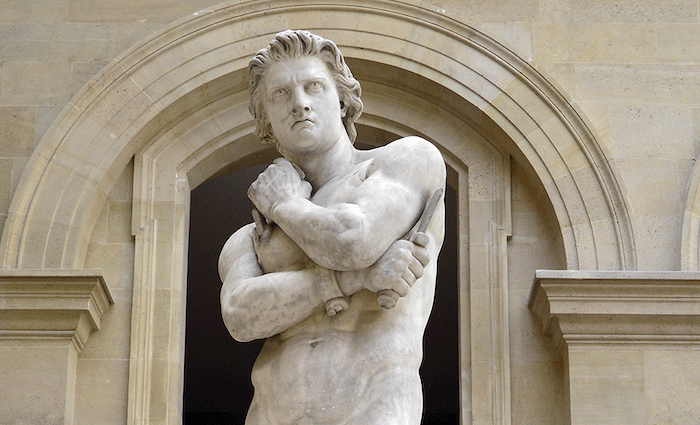

Denis Foyatier | Salon of 1827 | Carrara Marble | Cour Puget, Room 105
Denis Foyatier was a strong sculptor in the early 19th century, which is why Charles X chose him as his primary artist. Charles X is known in history as a tyrant but he definitely did not realize that while in power. If he did, he probably would not have commissioned Spartacus!
In Foyatier’s version, Spartacus has literally broken free of his chains—notice his wrists—and is now fighting back. Soon after the commission, Charles X is overthrown in the July Revolution in France and this statue is used as the emblem of that very fight.
There is no way Charles X would commission an escaped slave if he thought he was enslaving the population. He obviously felt some connection to the rebel. The population, on the other hand, definitely felt like escaped slaves when they stormed the Bastille and overthrew the government.
Spartacus is an iconic figure, well-represented by Foyatier and the correlation with the July Revolution makes him even more interesting.
13. Saint Mary Magdalene (Pénitente)
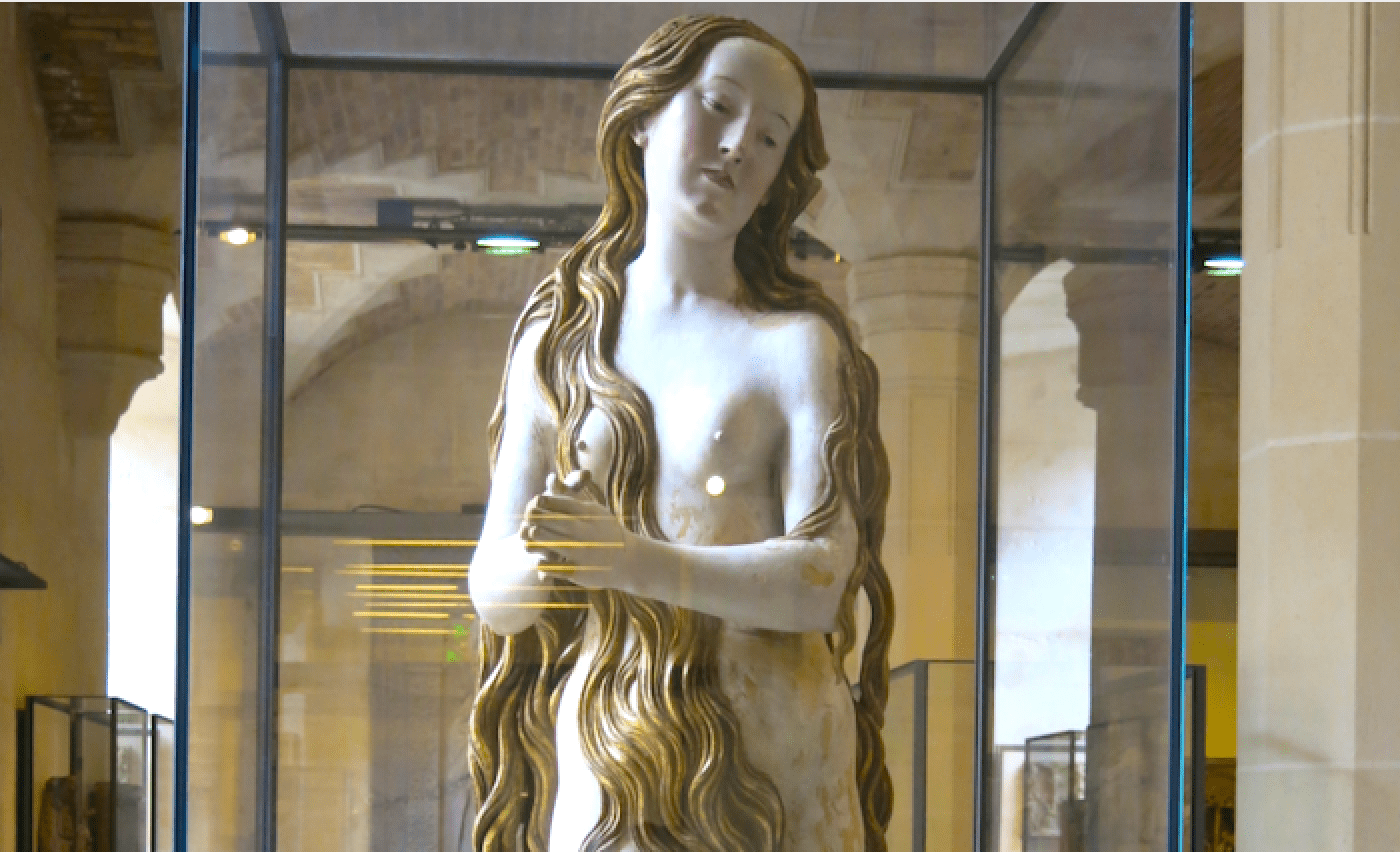

Grego Erhart | 1515 – 20 | Lindenwood and Polychrome | Dept. of Sculptures
Grego Erhart’s painted wooden sculpture of Mary Magdalene is truly stunning to look at, but I have chosen it for another reason. Sandro Botticelli painted The Birth of Venus 30 or so years prior to Erhart but he would never have seen it.
Mary Magdalene is normally painted as the pagan goddess Venus in Christianity, which is much less sacrilegious than it sounds. Renaissance artists relied on Roman art to perform their craft since it was abundant and of high quality. Therefore, all the pagan figures were used as models for the Christian figures.
Just like Sandro Botticelli’s masterpiece, The Birth of Venus, Erhart portrays Magdalene nude with long flowing hair covering her figure. The two works of art, one a sculpture and the other a painting, portray two different icons of almost identical form. The statue is definitely worth seeing if only for that reason.
Our Best Versailles and Paris Louvre Tours
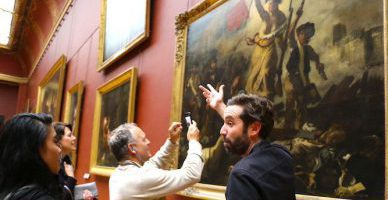



Top-Rated Tour
Secrets of the Louvre Museum Tour with Mona Lisa
The Louvre is the largest art museum on Earth and the crowning jewel of Paris, which is why it’s on everyone’s bucket list. Don’t miss out on an incredible opportunity! Join a passionate guide for a tour of the most famous artwork at the Louvre. Skip-the-line admissions included.
See Prices
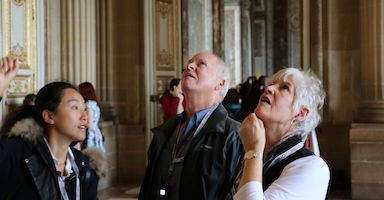


Likely to Sell Out
Ultimate Palace of Versailles Tour from Paris
Versailles isn’t that difficult to get to by train, but why stress over the logistics? Meet a local guide in central Paris who will purchase your train tickets and ensure you get off at the right stop. Then enjoy a guided tour of the palace and the unforgettable gardens. Skip-the-line admissions included to the palace and gardens.
See Prices
Not ready to book a tour? Find out if a Louvre Museums tour is worth it.
Not ready to book a tour? Find out if a Louvre Museums tour is worth it.
12. Moai Statue of Easter Island
Artist Unknown | Approx. 1000 B.C. | Basalt Tuff
Easter Island may possibly have been the most prosperous and industrious society outside of Egypt in the 12 century B.C. However, almost nothing remains in terms of record keeping. What is left is almost a thousand Moai statues that are littered across the island and now the world.
The statues are surprisingly simple but their mystery, age, and great quantity make them incredibly interesting. There’s almost no written or oral history but most believe the statues were carved for important leaders over time. It’s an interesting subject to research that’s very foreign to most of us.
The native population of the island caused their own end. They grew so much in their small ecosystem that they most likely outgrew their available resources, leading to their decline.
11. Salle du Manège
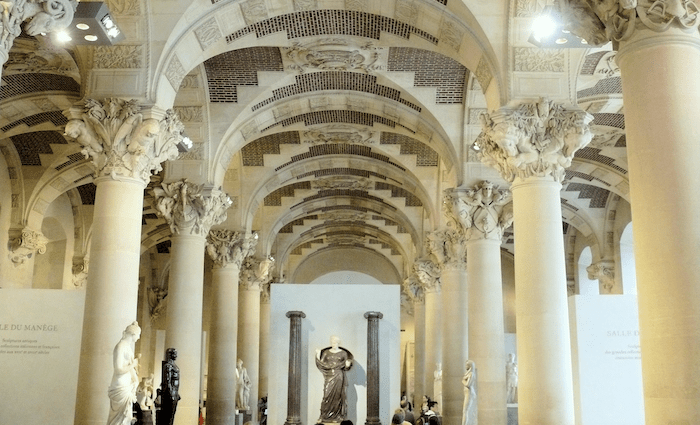

Many Artists | Salle du Manège
This is not one single sculpture but a collection of many sculptures that should be visited on any trip to the Louvre. Although there is a centerpiece, Worshipper, there’s not a single statue of significant importance. Many are beautiful and I would be quite proud to have any featured in my home, but on the level of the greatest statues in the Louvre, none make the list.
That said, as a collective, these statues fill a room—the Salle de Manège. Just the look and feel of this room will allow you to imagine what it’s like to be the offspring of a Borghese with a palace in Rome.
10. Marcellus Divinized into Mercury Psychopomp
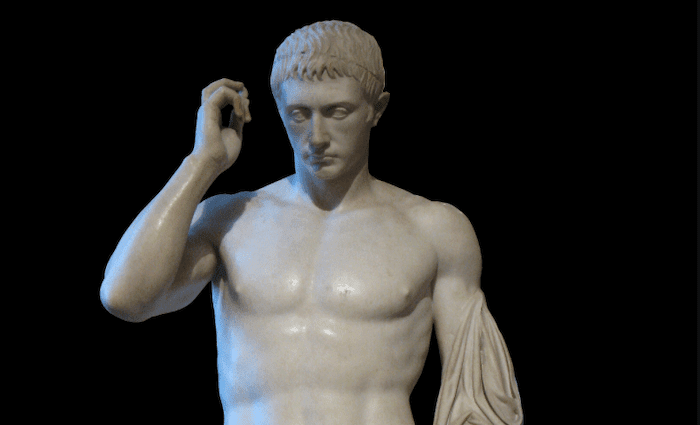

Unknown | First Century B.C. | Dept. of Greek, Etruscan, and Roman Antiquities
If, as a society, we stopped making wine for a hundred years, would we be able to pick back up where we left off or start over from scratch? One could say that where we are now is the product of thousands of years of wine-making.
The same goes for art. The art world peaked in Greece around the fifth to third centuries B.C. and then again in Rome from the last century B.C. until the third century A.D. From the records we have, art slowly tapered off as less important before vanishing as we know it in the sixth century A.D. in Western Europe.
Things started to pick up with Giotto di Bordone in the 13th and 14th centuries. Artists looked to the sculptors of Ancient Rome to see how they captured the human form in stone and with paint. It took centuries to get it back until it was lost again in the 19th century with the industrial revolution.
The sculpture of Marcellus is proof that the Romans had dozens of artists the likes of Michelangelo. What makes it so great? His physical anatomy is very life-like. So much so that his shoulders and muscles look soft and his face looks sad. He’s believable—which is incredibly difficult to achieve with a block of marble.
9. Alexander and Diogenes
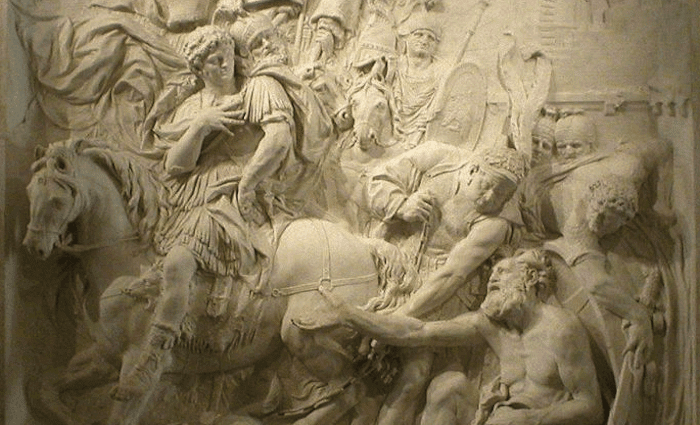

Pierre Puget | Carrara Marble | Dept. of Sculptures, Royal Collection
Art revived in Florence in the 14th and 15th centuries before moving to Rome and the popes in the 15th, 16th, and 17th centuries. The French would not have their moment in art until the 18th century. Rodin, often considered France’s greatest sculptor and a father of modern art, didn’t emerge until the 19th century.
Pierre Puget was arguably France’s first great baroque sculptor who could “hang” with the Italians. His relief depicts Alexander the Great marching victoriously with his soldiers who overlook Diogenes the philosopher begging on the ground. Alexander, portrayed as humble, stops and recognizes the philosopher who has a hatred for riches.
The scene would be created as a ruler’s reminder to be humble and, ironically, was immediately placed in storage at the Louvre without even being presented to King Louis XIV!
8. Milo of Croton
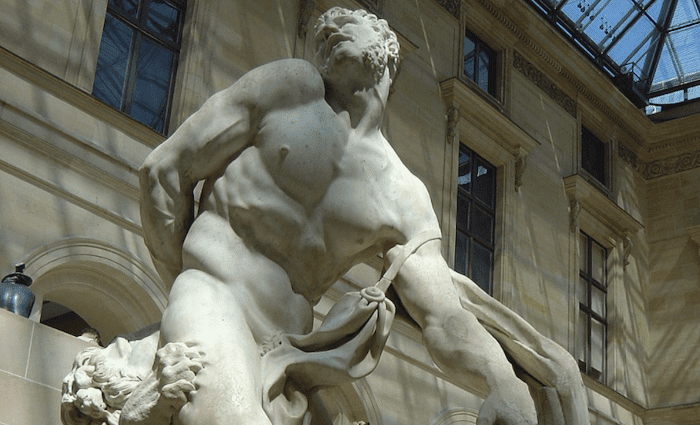

Pierre Puget | Carrara Marble | Dept. of Sculptures, Royal Collection
From the same sculptor, Puget, Milo of Croton depicts an athlete, possibly a narcissist, who wanted to test his strength by splitting a tree trunk with his bare hands. He trapped his hand in the tree trunk and was unable to release himself. Later, he was devoured by a lion.
You can tell Puget was slightly self-deprecating or at least wished that quality upon those who commissioned his works. He valued humility, which was surprisingly valued by the ancients. Something he likely learned from the baroque masters in Italy.
He was said to have started a sort of French-baroque movement named “Classicism.” It is said to be the point in time when art transitioned north from Italy. There is some truth in that, but artists like Antonio Canova of the 18th and 19th centuries would surely argue on that point. Soon to come!
Popular Paris Tours


Best-Selling Tour
Paris Catacombs Tour with Secret Rooms & Privileged Access
The Paris Catacombs are unlike most attractions you can visit since it’s an underground burial ground with 6 million skeletons adorning the walls. Learn the deep history here with our English-speaking guide for an experience of a lifetime. Skip-the-line admissions and access to exclusive areas that the public can’t access make this the best tour of the Paris Catacombs.
See Prices




Top-Rated Tour
Secrets of the Louvre Museum Tour with Mona Lisa
The Louvre is the largest art museum on Earth and the crown jewel of Paris. You could spend days here, but instead, join a passionate, English-speaking guide for a tour of the most famous artworks. View the Mona Lisa, the Coronation of Napoleon, Winged Victory of Samothrace, and so much more.
See Prices
Not ready to book a tour? Check out our best Paris tours to take and why.

Watch this video on YouTube
7. Venus de Milo
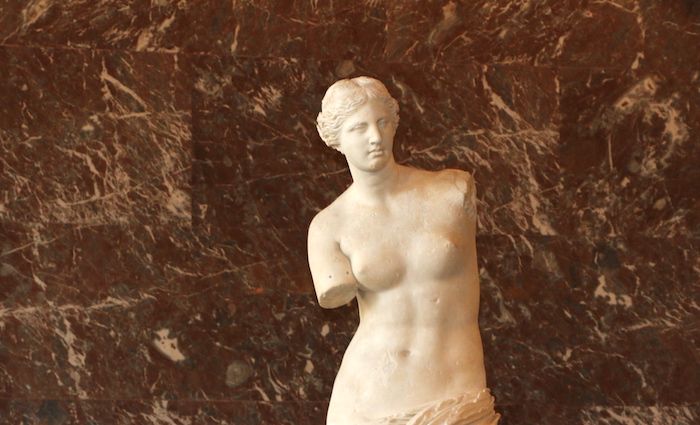

Artist Unknown | Island of Melos Greece | Marble | Sully Wing, Room 346
Venus de Milo is possibly the most famous and sought-after statue in the Louvre. Translating to Venus of (the island of) Melos (in Greece), the statue could be one of many goddesses including Venus. Our main challenge in understanding who she is lies in her arms, which were never found.
Without historical records, it is normally easy to identify statues based on their symbolism. Mercury wears a hat with wings, St. Peter carries keys (who doesn’t?), and Diana a bow. Venus, goddess of love, fertility, and, of course, sex is portrayed half naked, which is why it is most likely her.
However, the Greeks worshipped Aphrodite, which means the statue was named incorrectly after the Roman goddess despite being found in Greece. It is a popular conspiracy that she is Amphitrite, a Greek sea goddess made into a goddess on the Island of Melos (Milo).
While possible, it is dismissed by many due to her supple curves and sexual nature. Regardless of who it is, the statue is considered one of the greatest on Earth from Roman or Greek Antiquity. It is featured on the cover of Oxford’s book, “Classical Art, From Greece to Rome.” Need I say more?
6. The Slaves
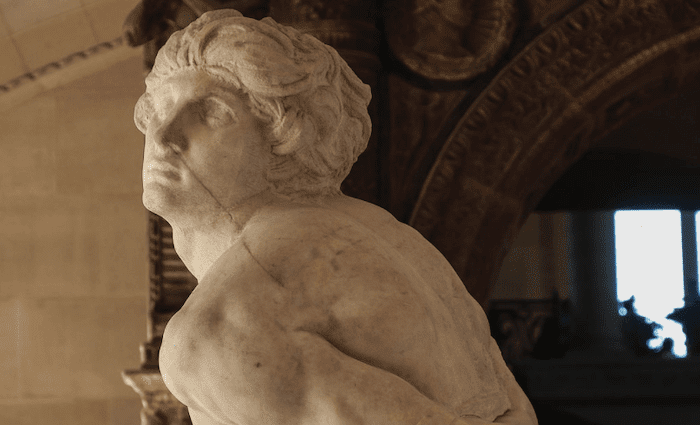

Michelangelo | Unfinished Sculpture | Gallerie Michel-Ange, Room 403
Michelangelo was commissioned by Pope Julius II to build his ambitious tomb, but it was not completely finished. He put tremendous effort into the tomb; however, the project was overly ambitious for Julius II’s age and finances. The centerpiece and a dozen other parts were completed and live a quiet life in the Saint Peter in Chains Church of Rome.
The unfinished remains are scattered all over Europe and The Slaves by Michelangelo is exactly that. They are extremely expressive statues depicting two slaves. One is the Rebellious Slave and the other is the Dying Slave. It is easy to tell them apart as the Dying Slave is shackled with arms behind his back. The Rebellious Slave is standing straight up at peace with death.
There is very little symbolism in these unfinished works to lead us to Michelangelo’s intentions, but it can be agreed that they are an expression of suppression in some form. Suppression of artistic freedom, suppression of sexuality, or of many things to come. The Louvre website made an interesting reference to Michelangelo’s fear of what would come after his patron Julius II’s death.
The room in the Louvre is named after Michelangelo, which is truly incredible. Imagine you become so amazing at what you do in life that the world’s greatest art gallery names a room after you containing your unfinished work!
5. Cupid and Psyche
Antonio Canova | Carrara Marble | 1797 | Dept of Sculptures
Antonio Canova is one of the greatest sculptors of all history. Had he lived in the 16th or 17th century, he would likely have garnered much more fame when the market for great construction was larger. That said, his stunning works are dispersed in the world’s great museums such as the Louvre and Hermitage (St. Petersburg).
The ancient story of Cupid and Psyche is unclear with wide variations, but the general theme is that Pysche, female, represents the human soul. Cupid, male, represents our desires and the perfect union between these two “beings” is the perfect marriage of life.
The statue is not very old, dating back a little over 200 years. You have to imagine that it was commissioned by an American Colonel, John Campbell, so it’s more recent than most. Canova achieves an unreal softness in his statue that is unparalleled in his era. Its composition depicts the same two figures as my number four choice, which are located right next to each other.
4. Psyche Revived by Cupid’s Kiss
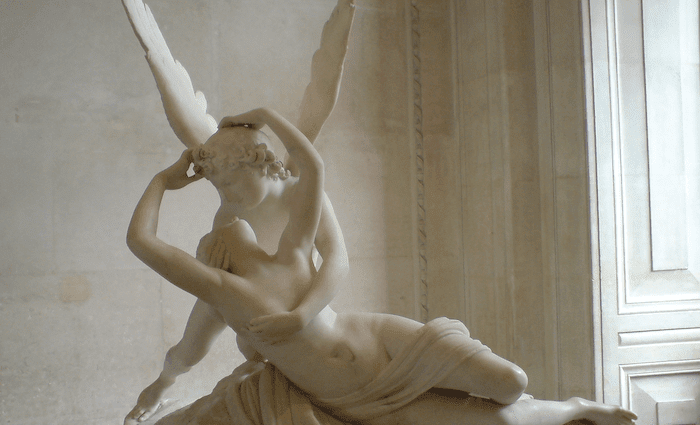

Antonio Canova | Carrara Marble | 1797 | Dept of Sculptures
In the same motion as the above sculpture, Canova created another version of the ancient legend. Proserpina was the unwilling wife of Pluto, the god of the underworld. Venus, the goddess of love, tasked Pysche to take a jar to the underworld and have Proserpina fill it up with the secret of divine beauty.
Venus warned Pysche not to look in the jar, but what woman would carry a jar of divine beauty and not take a peek? Unfortunately for Pysche, the jar was not filled with beauty but with “Sleep of Innermost Darkness.” Pysche fell into a deep sleep only to be found by Cupid, her true love.
Cupid found Psyche asleep and the jar next to her and knew what had happened. His heart was broken so he took her in his arms to give her one last kiss. Cupid’s kiss of true love revived Pysche, and Canova’s statue brings life to the moment she awakes.
It’s a truly stunning scene to witness for many reasons. Cupid’s wings add confidence and strength to him as a figure when viewed from the front but urgency and fear when viewed from the back.
Adding multiple viewpoints to a statue was something that became popular with Gian Lorenzo Bernini in the baroque period a few hundred years prior. Canova is an obvious detached student of Bernini as that very element, along with many others, makes Psyche Revived by Cupid’s Kiss so powerful.
3. The Three Graces
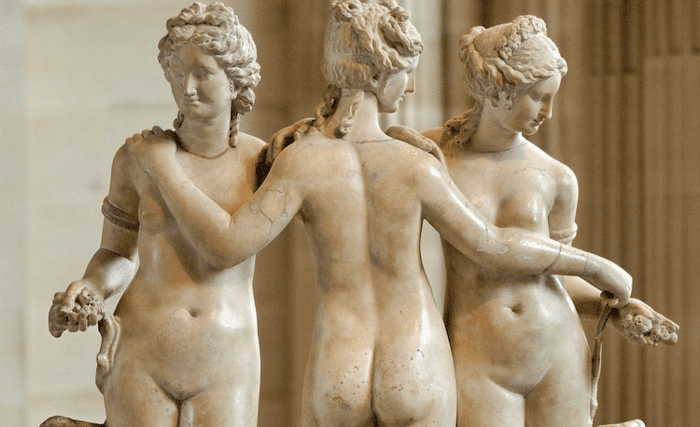

Ancient Roman 2nd C. A.D. | Carrara Marble | Restored by Nicolas Cordier | Dept. Greek, Etruscan, and Roman Antiquities
Cardinal Scipione Borghese of Rome was a true patron of the arts whose collection of sculptors was unmatched. This is partly due to his dispersion of wealth on the art community and in part because his uncle was the pope and he could intimidate anyone into bargain-basement deals.
He acquired the Three Graces in 1608 and had them restored by Nicolas Cordier who did a phenomenal job recreating the heads. The story of the Three Graces is from Ancient Greek mythology. The Graces stand for charm, beauty, and creativity. While the Greeks and Romans were civilizations of war, they also achieved a philosophical attitude that arguably has not been reached until recently with the exceptions of the Renaissance Medici of Florence.
The Three Graces represents the philosophical and artistic side of the Greeks and Romans. They are elegant, perfectly sculpted, and have an air of mystery and enchantment that holds your attention.
2. Sleeping Hermaphrodite on Bed
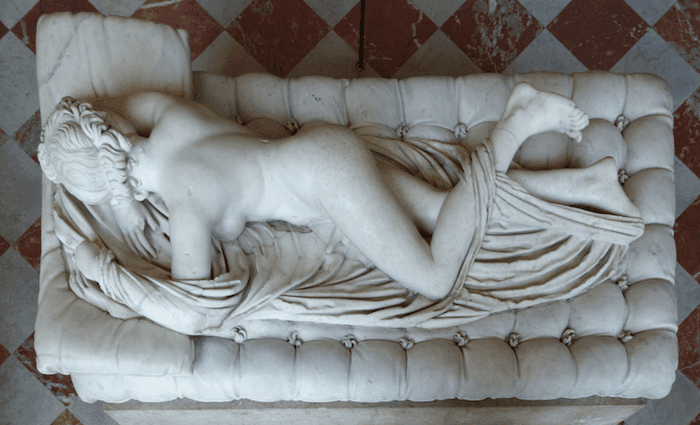

Unknown and Gian Lorenzo Bernini | p333
A hermaphrodite, in classical reference, is a female in appearance and swagger who possesses the “bits and pieces” of a male. Ancient Mediterraneans celebrated and sculpted the hermaphrodite as if she/he were a unicorn today. This can be seen in the hoards of statues dedicated to this sexual being created during antiquity.
There are many anthropological differences between our societies to explain why a hermaphrodite was so celebrated in the past and forgotten in modern times. The Romans and Greeks sculpted this figure with tremendous care, which is seen in the details.
This particular hermaphrodite is of perfect composition in terms of believability other than the obvious syntax differences. If you walk up from behind you’ll see what appears to be a beautifully soft woman of practically perfect proportions inviting you into bed with her. Then all of a sudden, surprise, there are some extra parts.
Bernini’s Contribution
The bed was added by Bernini and compliments the sculpture as if they were sculpted together. It’s important to note that the human figure is without comparison—the most difficult of things to create in art form. This is because, as humans, we can immediately see if anything is out of proportion. The first step is getting the proportions correct.
After that, you need to make the composition human-like. The back and bottom of the sculpture appear soft to the touch. This is complemented by the robe wrapped around her/him. It’s 100% the same material but appears to be different.
The sculpture is ancient, likely a second-century A.D. copy of a Greek sculpture that would have originally been done in bronze. Gian Lorenzo Bernini, a Roman baroque master only rivaled by Michelangelo his predecessor, would eventually add a bed to the figure. Just as it’s difficult to make stone look strikingly like the softness of a woman, making stone look like a soft bed is equally difficult.
Our Best Versailles and Paris Louvre Tours




Top-Rated Tour
Secrets of the Louvre Museum Tour with Mona Lisa
The Louvre is the largest art museum on Earth and the crowning jewel of Paris, which is why it’s on everyone’s bucket list. Don’t miss out on an incredible opportunity! Join a passionate guide for a tour of the most famous artwork at the Louvre. Skip-the-line admissions included.
See Prices



Likely to Sell Out
Ultimate Palace of Versailles Tour from Paris
Versailles isn’t that difficult to get to by train, but why stress over the logistics? Meet a local guide in central Paris who will purchase your train tickets and ensure you get off at the right stop. Then enjoy a guided tour of the palace and the unforgettable gardens. Skip-the-line admissions included to the palace and gardens.
See Prices
Not ready to book a tour? Check out our best Paris tours to take and why.
1. Winged Victory of Samothrace
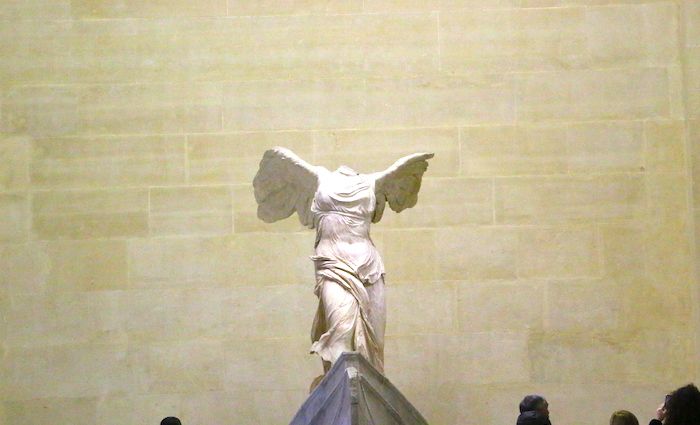

Artist Unknown | 190 BC | The Daru Staircase in Dept of Greek, Etruscan, and Roman Antiques p 438
The Winged Victory of Samothrace is, in my opinion, the greatest sculpture in the Louvre, which makes it one of the greatest in history. It’s rivaled by few with the exception of possibly the Lacöon Group in the Vatican Museums and David in Accademia.
Ancient Sculptors vs Renaissance, Baroque, and Beyond Sculptors
It’s important to note that the art of sculpting stone reached its pinnacle in ancient Roman times around the second century A.D. Yes, “our” era does include incredible sculptors like Michelangelo, Bernini, and Antonio Canova who are arguably the three best sculptors of stone in the last 500 or so years. That said, there would have been 100s who could have been their equal in Rome in the second century A.D.
You have to imagine that the Romans dominated Europe for a thousand years. When they were defeated in the fifth century by the Goths, they would have destroyed the city. What remains would be the scraps left over, yet the bottom of this list is dominated by ancient sculptures.
Why is it the best sculpture in the Louvre?
For me, Winged Victory of Samothrace is the best because it passes a few difficult tests.
The First Test
The first test, as always, is to see if the anatomy of the figure is believable to the eyes. It is an easy test that anyone can do since we do it every day in the mirror. If the figure looks real, then the artist did a good job. If something looks “off,” then the artist did a bad job. Even without arms or a head, Winged Victory of Samothrace has a perfect anatomical composition.
The Second Test
The second test is to ask if it evokes strong emotion. It’s another simple test that anyone can do because we’ve all experienced emotions. This sculpture would have been fitted to the front of a warship to intimidate enemies so, yes. Its very creation was to say, “Even when we (the Greeks) crush enemies we do so with unparalleled style and culture.”
The Third and Final Test
The third test would be to decide if the artist has shown more skill than other sculptors, which is easy to do with some instruction. Whoever sculpted the Winged Victory of Samothrace would have been the Michelangelo or Bernini of their time, which can be seen in the details.
The body of the figure is visibly physical and sexual at the same time. The artist created that effect by giving her a strong presence, which is complemented by the transparency of her stone clothing. Her belly button and breasts are visible through her shirt (in stone), which feels impossible.
Her wings are what is truly amazing and I’ll explain why. Because she passed the first test of believable human anatomy, you no longer think about structural integrity. Her wings are supported by bones, right? Obviously not. The artist took some considerable risks extending them so far out and would have had to have worked with a particular piece of marble to accomplish this.
Remember, the stone is heavy and this was created for the prow of a ship—which is just incredible. The artists covered all their bases here and achieved things that would not be matched until a thousand years after the Roman Empire (this is a Greek statue).
Louvre Tours
If you’ve read all the way through the article, then you must have enjoyed the stories behind these incredible works of art! This blog is not meant to replace a guided tour but instead to make it better. Check out our tours of the Louvre led by the most passionate guides in Paris. They’ll undoubtedly elevate your experience.
Not ready to book a tour? Find out if a Louvre Museums tour is worth it.


Where To Stay in Paris
With a city as magnificent as Paris, it can be hard to find the perfect hotel at the perfect price. Explore the best hotels and places to stay in these incredible neighborhoods in Paris.

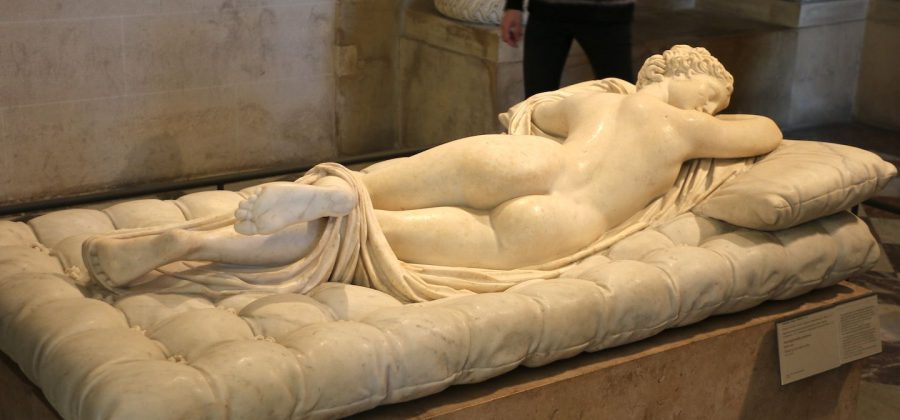
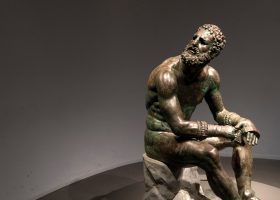
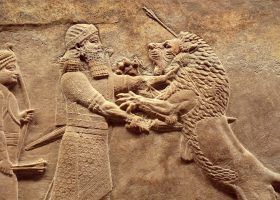
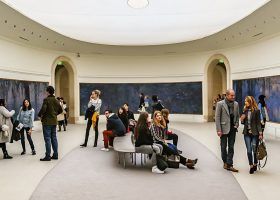
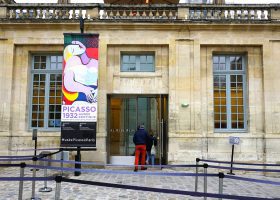
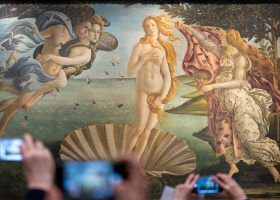
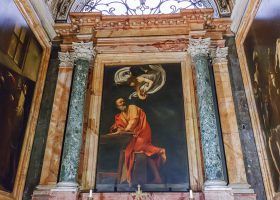


Mr. Sean is a cool tour guide. However, since I’ve been in this wheelchair, I don’t travel anymore so it’s great to get a chance to tour around online. Thanks!
Carrara marble. Not carrera
Thanks for alerting us to a typo! Hope you enjoyed the article and have a chance to visit soon!